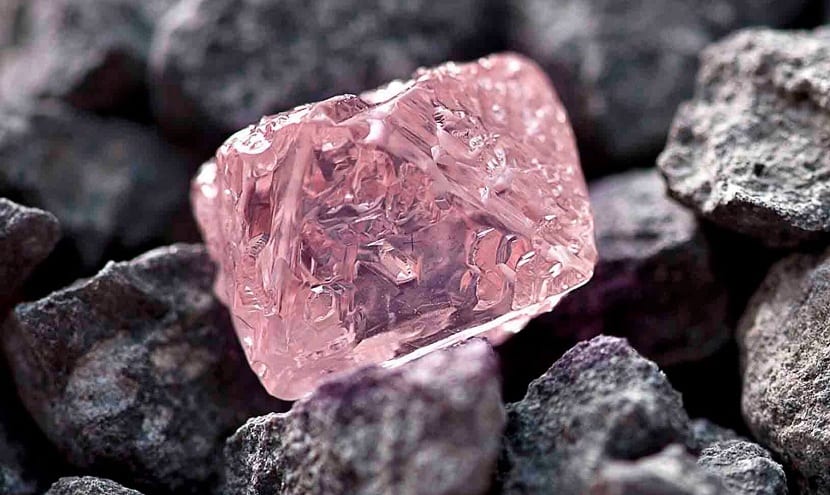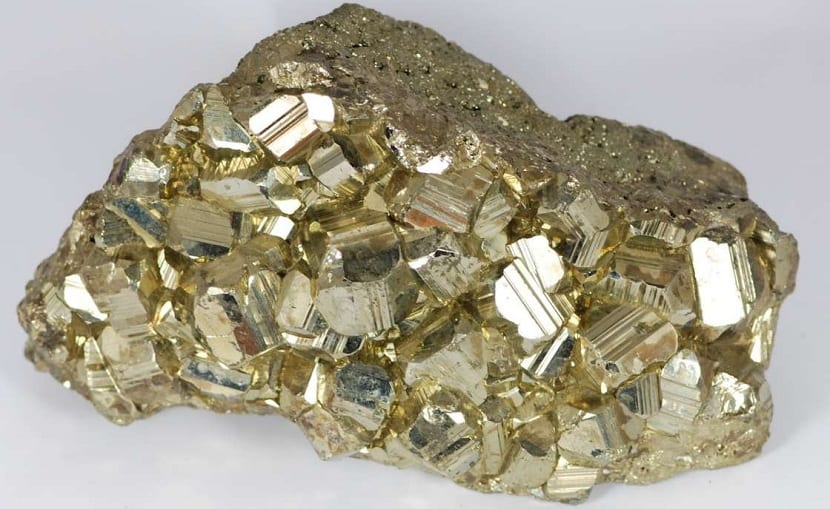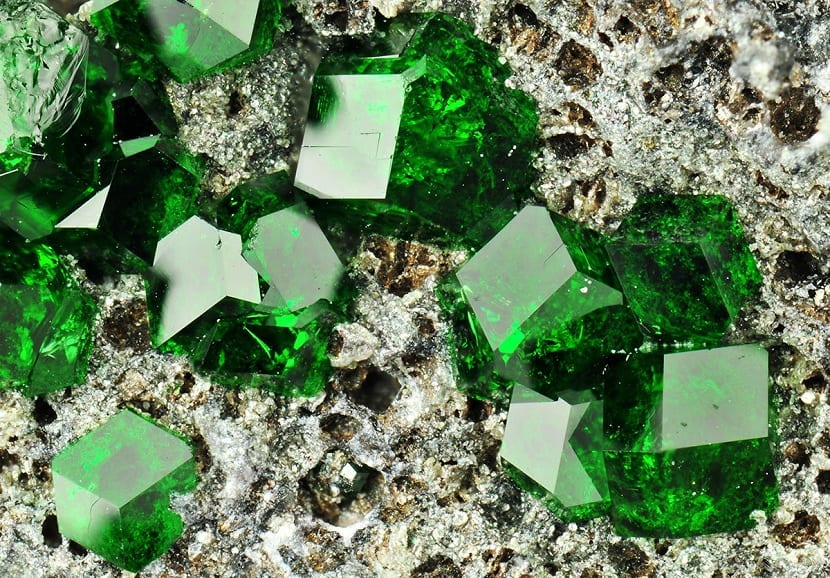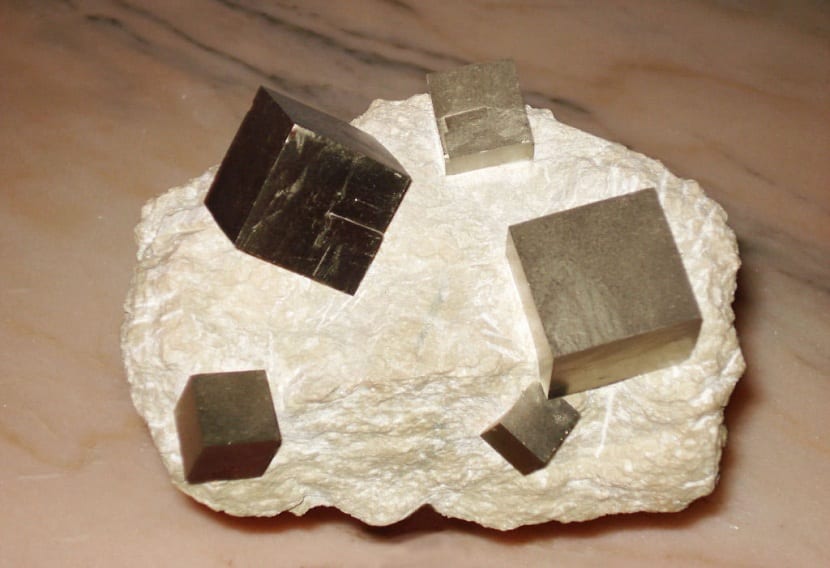
It is possible that on some occasion you have studied minerals and their characteristics. There are many types of minerals and each one is extracted in a way and has different characteristics. The human being exploits minerals for different uses. A mineral is nothing more than an inorganic solid that contains natural substances and with a specific chemical formula.
In this article we are going to focus on the different types of minerals that exist on Earth and what they do. Do you want to know more about it? This is your post 🙂
Characteristics that define a mineral

The first thing we have to look at about a mineral is that it is an inert, inorganic element, that is, it has no life. For a mineral to be a mineral, several conditions must be met. The first is that it cannot come from any living being or organic remains. These are natural substances that are generated on Earth. Being natural, it must be extracted from nature and not created artificially.
With the issue of minerals there is a lot of business. There are people who counterfeit minerals for other synthetics made by themselves to sell them at the expense of people who believe in the mystical power of minerals. A clear example is labradorite, quartz, etc.
The chemical formula of a mineral has to be fixed. It is made up of molecules and atoms arranged in a fixed way and should not be changed. Two minerals can be composed of the same atoms and molecules but have different proportions. An example of this is cinnabar. This mineral has the chemical formula HgS. This means that its composition is made up of molecules of mercury and sulfur. For cinnabar to be a true mineral, it must be extracted from nature and be inorganic.
How to differentiate one mineral from another

When in doubt, there are characteristics that can help us differentiate between some types of minerals and others. We remember that each mineral has properties that make it unique and different from the rest. We are going to see what are the characteristics that would help us differentiate between different minerals.
- The first is to know whether or not we are talking about A crystal. There are minerals that are crystals themselves and of natural origin. Obviously it is not a crystal like the one we are used to seeing, but they have a polyhedral shape, faces, vertices and edges. It should be mentioned that most minerals are crystals due to their structure.
- Habit is the form they usually have. Depending on the temperature and pressure at which they are formed, minerals have a different habit. It is the form that they commonly have.
- Color it's a fairly easy feature to differentiate. Each miner has a different color that can help us know which is which. There are also colorless and transparent ones.
- The bright It is another characteristic that can help us to know the types of minerals. Each one has a different glow. There are them with metallic, vitreous, matte or adamantine luster.
- The density it can be seen quite easy. Depending on the size and mass of each mineral, you can easily know the density. The densest minerals are small and heavy.
Properties of minerals

Minerals have properties that serve to classify them and generate a variety of them. One of its main properties and by which they are classified is hardness. From the hardest to the softest they are classified by the Mohs scale.
Another property is fragility. That is, how easy or difficult it is to break at one blow. Hardness should not be confused with brittleness. For example, diamond is the hardest mineral since it cannot be scratched unless it is with another diamond. However, it is extremely easy to break when hit, since it is very fragile.
When a mineral breaks, it can fracture irregularly or exfoliate on a regular basis. When the latter happens, it means that they have equal pieces. To analyze a mineral completely all its characteristics and properties must be taken into account.
The Mohs scale is the following, ranging from the greatest hardness to the least:
- 10. Diamond
- 9. Corundum
- 8. Topaz
- 7. Quartz
- 6. Orthoclases
- 5. Apatite
- 4. Fluorite
- 3.Calcite
- 2 plaster
- 1.Talc
To facilitate understanding, it must be said that hardness consists of the ability to be scratched. In this case, the talc can be scratched by everyone, but it cannot scratch anyone. Quartz can scratch the rest of the list from 6 down, but can only be scratched by topaz, corundum and diamond. Diamond, being the hardest, cannot be scratched by anyone and it can scratch everyone.
Types of minerals

The way minerals appear in nature helps them identify two large groups. On the one hand, they are rock-forming minerals and, on the other hand, ore minerals.
An example of the first type of mineral is granite. Granite is a rock composed of three types of minerals: quartz, feldspars, and mica (see Rock types). Of the second type we have iron ores. It is an ore because it is obtained directly from iron. Iron ore has a high content of natural and pure iron, so it can be extracted directly. It must be said that ores tend to have impurities.
Among the rock-forming minerals we have:
- These are a group of minerals that form rocks with greater abundance. We find biotite, olivine, quartz and ortose.
- No silicates. These minerals do not have silicon and are gypsum, halite and calcite.

On the other hand, we have the ore minerals from which it is extracted directly through the element. The large accumulation of one type of mineral ore is called a deposit. To obtain the metal from an ore, the impurities are separated by crushing it and then re-fuses at high temperatures. This is how the famous ingots are formed.
I hope that with this information you can understand more about the types of minerals.